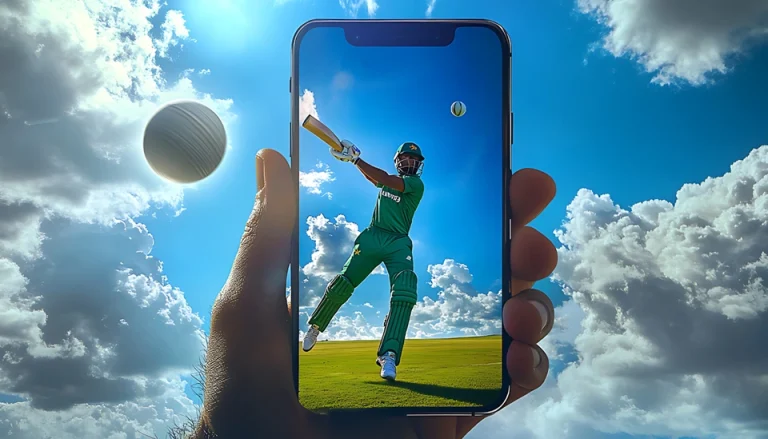Big fixtures deserve calm. Yet match nights often derail the moment a copycat page pushes a “codec,” auto quality bounces during the powerplay, or a phone runs hot right as the chase turns sharp. The fix isn’t magic – it’s a short routine done before the toss. Pick a stream that behaves like a real service, prepare the phone so video and battery work together, and lock picture settings to the network that actually exists. Do that once and reuse it all season. The stream opens fast, audio stays in step, and attention returns to the field – angles, timing, and smart captaincy – instead of fighting settings with one eye on the over count.
Choose a stream that acts like a real service
Everything starts at the address bar. A trustworthy page loads over https, shows a brand that can be traced, and never asks for contacts, SMS, or device-admin rights. Pages with hyphen-stuffed domains, forced extensions, or hard redirects waste time and tend to collapse when traffic surges. Read permissions like a checklist during install – a viewer needs network, media, and simple notices, nothing else. Keep one browser profile just for watching – logged into nothing, pop-ups off, site notices off – so the player runs light. Update the app hours before play rather than at the toss. These plain moves look dull and feel strong when small frictions turn into stalls during a tight chase.
While sketching tonight’s plan, a neutral map helps organize time and fixtures, and mid-prep it’s handy to glance at the desi cricket game page to see how “live” and “upcoming” lanes are laid out; then return to the provider you actually trust and confirm the exact domain before first ball. Treat that index as a map, not a promise. Add two alerts – one a day out to handle updates and storage, another twenty minutes before play to open the app and test audio. That small buffer blocks last-minute mirror detours, catches login or PIN prompts early, and turns the first tap into a habit instead of a rush.
Prep the phone so video, audio, and battery work together
Good viewing starts with hygiene, not hacks. On first run, sign in on Wi-Fi so codecs cache without burning mobile data. Clear the recent-apps list before the toss so your viewer owns the lane, and close other video tools that wake in the background. If the app stores card details, lock it behind the screen lock and biometrics. Rest the phone on a firm, cool surface – soft cushions trap heat and trigger throttling just when the run rate climbs. Cap background refresh for chat and cloud sync so alerts don’t steal bandwidth mid-over. Keep one payment method current so renewals cannot fail five minutes before play and spark avoidable chaos.
- Download from the brand’s main domain; skip mirror links.
- Deny off-topic permissions at install – no contacts, no SMS, no admin.
- Turn off site notifications; keep a clean streaming profile.
- Update earlier in the day; never mid-innings.
- Use wired earbuds or low-latency Bluetooth to keep voice tight with bat-on-ball.
Set picture and data for the network you actually have
Sharp specs on paper mean little on a busy tower. Match quality to real bandwidth and stop fiddling. On the move, 480p or 720p hits the sweet spot for clarity, heat, and battery; at home on strong Wi-Fi, step up once and leave it there. If “auto” keeps bouncing, turn it off – a steady mid-tier feed beats a stuttering HD that burns data and patience. Expect roughly 0.8–1.5 GB per hour at 720p and around 2–3 GB at 1080p depending on frame rate, so add a monthly data warning before a doubleheader eats the plan. Hold brightness steady to limit heat and clock drops. If the player offers a low-latency toggle, test it on a quiet day and pick the fastest stable setting for match night.
Watch together without delay or spoilers
Mixed buffers split a room fast – one TV cheers while a phone lags by seconds. Use the same platform across the group when you can, seat the main screen near the router, and avoid channel-hopping mid-over because each hop rebuilds the buffer. Re-align at the first ad break with a short pause-and-play three-count. Mute live-score alerts and social banners until the last ball since those often land ahead of video and spoil tense finishes. If one feed still leads, nudge its buffer up a notch or add a brief pause at the next break. Keep commentary clean and steady; clear audio carries the room through brief picture dips without missing a field change that sets up a top-edge to deep square.
One routine, many calm nights
End clean and the next fixture opens without guesswork. Close the player from inside the app, clear recent apps, and jot what worked – device model, app version, network, and fixed quality – so there’s a recipe to repeat. Review permissions once a month and strip anything that doesn’t serve video, login, or payments. Keep the two-alert habit so updates land with time to spare and the sound check happens before the anthem. With source checks set, device hygiene handled, and settings locked, the tech fades and the match leads. The picture holds when pressure rises, reactions land together, and the night ends on your terms – a clean view of the last ball and a room that rises in the same second.
